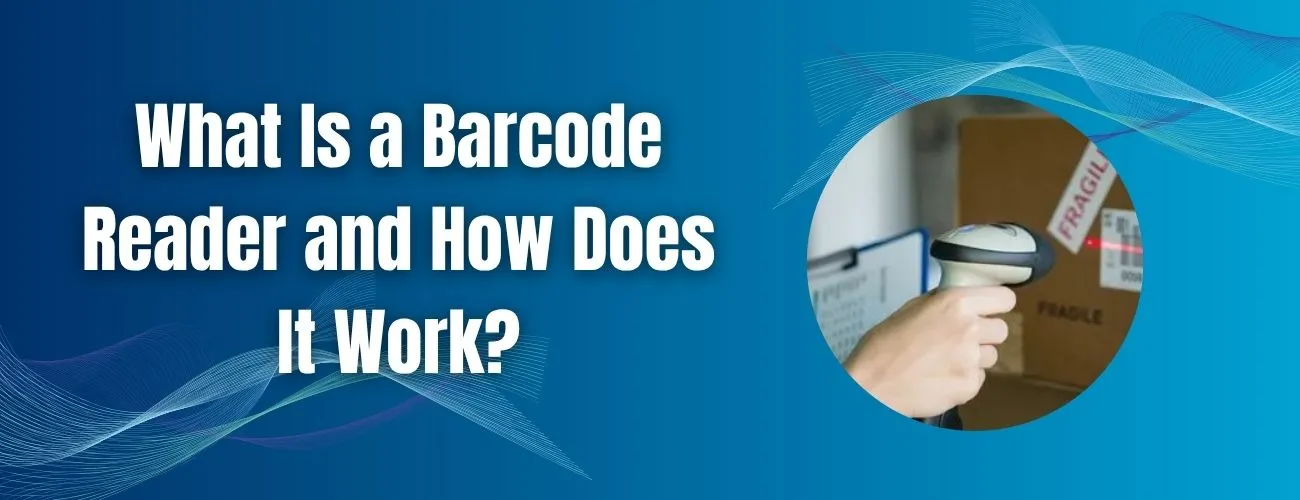What is Barcode Reader: Understanding the Technology Behind Every Scan
Have you ever been curious about how a plain black-and-white pattern can reveal all the data of a product in a snap? That’s the wonder of the what is barcode reader, a minor yet powerful gadget that has entirely changed the way data is handled in various fields, including business, healthcare, retail, and logistics.
Barcode readers are found everywhere from supermarkets to hospitals. They are time savers, error reducers, and help in the efficient management of stocks. Without the barcode technology, modern business operations would be very slow and less accurate compared with today’s conditions.
In this article, the barcode readers, their functions, types, advantages, and practical applications will be in the spotlight. This guide will give a comprehensive view of the barcode readers and their importance in the modern world, whether you are a student, a business owner, or just a curious person about technology.
Key Takeaways
- A barcode reader is a device that scans barcodes and converts them into readable data.
- Barcode readers make stock management accurate, fast, and organized.
- Barcode readers are available in diverse types, such as laser, CCD, and camera-based ones.
- This technology is utilized in nearly all industries, such as retail, healthcare, logistics, and manufacturing.
Understanding What a Barcode Reader Is
A barcode reader, which is sometimes called a barcode scanner, is an electrical device that is capable of reading and decoding the information that a barcode contains. The method of operation is by directing light onto the barcode and then, by measuring the light reflection, the device identifies the pattern of the black and white bars.
Barcode readers are indispensable elements of the automated data capture systems. They are connected to the computers or databases to send the scanned data immediately. This whole process of transferring data does away with manual entry, thereby making fewer errors and also increasing productivity.
Components of a Barcode Reader
A standard barcode scanner is composed of three essential parts:
- The light source: Lights up the barcode before scanning.
- The sensor: Picks up the light that is reflected and changes it to a signal of electricity.
- The decoder: Interprets the signal into digital data, which is accessible to a computer.
How a Barcode Reader Works
The operation of the barcode scanner is based on the optical technology spectrum. The scanning procedure of the barcode consists of the light being reflected differently from the black and white areas of the code. This reflection is detected by the sensor and converted into an electrical signal.
After that, the signal goes to the decoder, which recognizes the pattern and then converts it into understandable information. The information is then transmitted to a computer or point-of-sale (POS), which rapidly processes the data and shows the product details.
Step-by-Step Process
- The light source is activated for the barcode.
- The sensor detects the light that is being reflected by the bars and spaces.
- The decoder performs the process and changes the signals into readable data.
- The data is displayed on a computer or POS screen.
Types of Barcode Readers
Various industrial sectors integrate diverse barcode visioners according to their specific requirements. Every sector has its advantages in terms of pace, accuracy, and cost.
Barcode scanners are usually categorized into four types: pen-type, laser, CCD, and camera-based scanners. If you understand the features of every type, then it will be easier for you to decide on the right scanner for your company or project.
Barcode Reader Types
- Pen-Type Reader: It consists of a light source and a photodiode at the tip of the pen; extremely low-volume scanning is its perfect area of operation
- Laser Scanner: A laser beam is used, which allows very fast and highly accurate scanning; mainly, it is appropriate for retail environments.
- CCD Reader (Charge Coupled Device): It reads the barcode with no moving parts; hence, it is suitable for industrial use.
- Camera-Based Scanner: The process of image processing is applied; it can read both 1D and 2D barcodes with high efficiency.
Advantages of Using a Barcode Reader
Barcode readers are a technology that brings forth a lot of advantages and thus become important in almost every sector. Their main assets are streamlining operations, cutting down costs, and making real-time data available for quicker and easier decision-making.
A good illustration is the retail industry, where barcode scanners accelerate the checkout process considerably. At the same time, they maintain a correct count of the stock in the warehouse as well as the flow (in and out) of the products. All this results in fewer human errors and increased productivity, finally.
Main advantages
- Higher Accuracy: Fewer human errors through manual fillings.
- Quicker Processing: Daily sales and data collection get faster.
- Less Costly: Reduces overheads from paperwork and personnel.
- Data Control: Guarantees continuous tracking and database updating.
Applications of Barcode Readers
Barcode readers are very versatile and reliable, so they can be used in different industries. They instantly help identify products at checkout in the retail sector. Besides, in healthcare, barcode readers take care of correct patient identification and tracking of medicines.
Furthermore, apart from logistics and manufacturing, industries have also been using barcode readers for supply chain management, product tracking, and quality control. The ability of barcode readers to process huge amounts of data makes them indispensable for modern business operations.
Industry Applications
- Retail: Fast scanning and billing of products.
- Healthcare: Identification and tracking of patients and medicines.
- Logistics: Monitoring of shipments and control of inventory.
- Manufacturing: Production and quality control are observed.
Barcode Reader vs. QR Code Scanner
Barcode scanners and QR code readers are two devices that are used to read the same kind of information, but their functioning and their capacities show some slight differences. The most important function of the barcode reader is to read the one-dimensional barcodes, whereas the QR code scanner can read the two-dimensional codes, which can hold more information.
It is common for most of the recent barcode readers to be able to read both types of codes, thus making them multitasking equipment for the different sectors. For instance, retail shops would invest in hybrid scanners instead of normal ones due to the adaptability and comfort that come with using them.
Major Differences
- Barcode Reader: Just basics of reading 1D barcodes only (linear).
- QR Code Scanner: Able to decode 2D symbols plus more info.
- Hybrid Models: Do the dual job of scanning barcodes and QR codes.
- Application of Barcodes: Retail; QR codes: advertising, and payment through the mobile phone.
Future of Barcode Reader Technology
As technology advances, barcode readers also become smarter, faster, and better networked. The modern scanners come with a variety of connectivity options, including wireless, cloud integration, and AI-based recognition systems.
Due to the increasing use of automated systems and the Internet of Things (IoT), barcode readers are becoming crucial in the process of converting to a digital world. These devices will be the main instruments in data-centered areas, from smart warehouses to retail stores with full automation.
Developing Trends
- Barcode readers operate wirelessly and via Bluetooth.
- Integration of AI and machine learning to reduce errors.
- Systems for inventory tracking based in the cloud.
- Scanners based on mobile phones through smartphone applications.
Conclusion
A barcode reader is more than just a simple scanning device—it’s a crucial component. One of the most significant benefits of barcode technology is that it has become indispensable in the data-driven world of today. It enhances the precision of retail transactions and improves the speed of logistics; barcode readers are hard to imagine eliminating them from modern processes.
The future of barcode readers, alongside technological development, will be their continuous upgrading, turning them into multifunctional and smart devices. If one knows their operation and usage areas, then he is the one who will take advantage of the business operations and keep the competition at bay.
FAQs
1. What is the purpose of a barcode reader?
A barcode reader is the device that scans, decodes, and almost instantly provides the information of the product or item for inventory, billing, and data management.
2. What is the difference between a barcode reader and a QR scanner?
A barcode reader is limited to scanning one-dimensional (1D) barcodes only, whereas a QR scanner can even read two-dimensional (2D) codes that can contain more data.
3. Is it possible to use a barcode reader without internet access?
Yes, absolutely, barcode readers are capable of working without an internet connection and will keep the scanned data in their local memory until it is uploaded to a computer or cloud system.
4. Which industries are the biggest users of barcode readers?
The retail, logistics, healthcare, and manufacturing sectors are the main consumers of barcode readers having realized the full potential of data collection and process automation using these devices.






